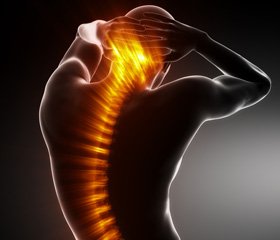Журнал «Боль. Суставы. Позвоночник» 1 (09) 2013
Вернуться к номеру
Osteoporosis and Orthopaedic Surgery
Авторы: Holzer G., Medical University of Vienna, Vienna, Austria
Рубрики: Ревматология, Травматология и ортопедия
Разделы: Медицинские форумы
Версия для печати
Тезисы докладов Международной школы-семинара «Остеопороз в травматологии и ортопедии»
4–8 февраля 2013 года, г. Яремче, Украина
Osteoporosis is a systematic disease that is characterized by low bone mass and deteriorated microarchitecture with an increased fragility of the bone leading to an increased number of fractures.
The orthopaedic surgeon is in various ways confronted with patients with osteoporosis. As osteoporosis is an ageassociated disease a very high percentage of patients seen in offices and in hospital outpatients’ departments are affected with osteoporosis. Although osteoporosis or the complications of osteoporosis are primarily seen in older patients the changes leading to this disease start at a much younger age. The most severe complications of osteoporosis are fractures. The most frequent fractures occur in the vertebral body, at the proximal femur or the distal radius.
There are mainly two aspects of osteoporosis, which orthopaedic surgeons are confronted with. First of all is elective surgery in patients with osteoporosis and secondly is the dealing with fractures of patients with osteoporosis.
First of all most people receiving elective surgery whether total joint replacement in the hip, knee, shoulder or other joints or spine surgery are primarily carried out on older patients. The design of these implants is already respecting the fact that a lot of people have osteoporosis. If the design of the implant does not provide enough stability in a specific patient, we can decide to have the implant cemented. In the hip joint we primarily do cementless implantation in cases of good bone quality and a good primary stabilization of the implant can be reached. In cases where there is bad bone quality and no primary stabilization we need to do a cemented implant. In total knee replacement we use a hybrid solution, in which the femoral part of the implant is implanted cementless, but the tibia plateau of the implant is cemented. In spinal surgery, when carrying out dorsal stabilization of the spine in the case of spondylolisthesis or osteochondrosis, there are screws available that can be cemented into the vertebral body. All these tools improve the stabilization of implants in patients with osteoporosis.
The treatment of fractures can be carried out conservatively or surgically. In the case of distal radius fracture most patients receive a cast to allow fracture healing, but in some patients osteosynthesis is necessary. In fractures of the proximal femur there are a number of options to treat this fracture which range from the fixation of the fracture by using screws, to primary total hip replacement in cases of very medial femur fracture with a risk of developing a secondary necrosis of the head.
In vertebral fractures there are two minimal invasive surgical procedures available to fix fractures. Vertebroplasty is an injection of bone cement into the vertebral body. This procedure just fixes the fracture in the status quo. By using balloon kyphoplasty we can insert a balloon into the vertebral body, restore height of the vertebral body and then inject bone cement into the preformed hole. This procedure is safer, because it avoids cement leakage and neurological problems. Nowadays the indication for both these procedures is the continuing pain after the time when fracture healing should have been reached. If at that time there is still local pain in the respective vertebral body (after six to eight weeks) and the MRI scan shows an edema in the vertebral body, this is an indication to carrying out one of these procedures.
There are some other specific problems of osteoporosis in the field of orthopaedic surgery. One of them is the question if the osteoporosis treatments can improve the fixation of the implants used in joint replacement. A metaanalysis carried out to test the effects of bisphosphonates on aseptic loosening showed no clear answer to this problem. This is why there is no preference to use bisphosphonates for this reason. Another issue is the effect of osteoporotic treatment on fracture healing. Some years ago there was a discussion about the effect of bisphosphonates on fracture healing. Now studies are showing that fracture healing is delayed and the fracture callus is increased in size during bisphosphonate treatment. But the increased diameter of the callus means that the fracture is more stable. So bisphosphonate treatment in patients experiencing fractures during treatment must not has to be stopped after a fracture. This is only the case if highly concentrated bisphosphonates which are applied once a year intravenously. In this case a twomonth delay in applying the infusion after the fracture should be observed.
On the other hand anabolic treatments for osteoporosis, such as PTH 134 and PTH 184 are known to have a positive effect on fracture healing. In different studies it could be shown that PTH reduces the time to fracture healing, both radiologically as well as in functional testing. Our group published a study on the effects of PTH 184 on healing of pelvic fractures and could show that time to heal fractures and pain was significantly reduced. Now a large number of studies on fractures in different areas are underway, but it is obvious that PTH treatment of fractures will revolutionize fracture healing.
Orthopaedic surgeons in numerous ways are confronted with patients with osteoporosis, but the most important issue is secondary prevention. Tools to identify patients with a higher risk of fractures are widely used, their success is limited. Also in the future it will always be difficult to select patients with a higher risk for fractures. But there is a must to assess and initiate treatment in people, who already had a fracture. So secondary prevention for osteoporosis is the most important issue for orthopaedic surgeons.

